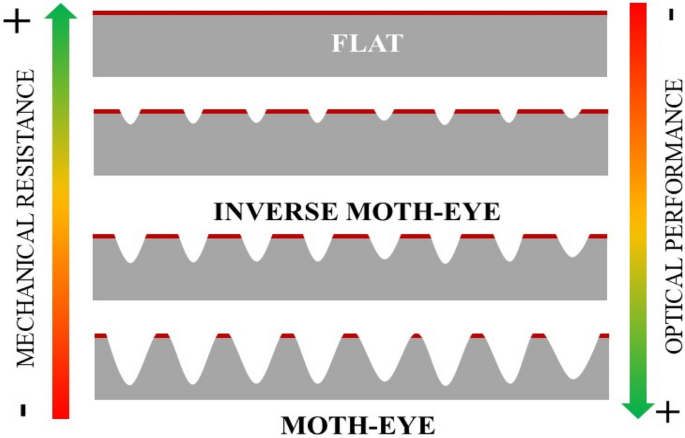
- Mac Flat Package Editor
- Flat Package Editor Download
- Flat Package Editor
- Flat Package Editor 2008 Download
Flat File Connection Manager Editor (General Page) Use the General page of the Flat File Connection Manager Editor dialog box to select a file and data format. A flat file connection enables a package to connect to a text file. To learn more about the Flat File connection manager, see Flat File Connection Manager. Connection manager name. I have bunch of 100 logfiles in a location.I need to load one by one.I am using the foreachloop container with flat file connection manager.The problem here is if a Flat file source editor try to open a file whcih is opened or opend for writing the Package failes.So any one can suggest how to overcome this issue.Is there any Readonly properties like that avilable in the flat file file.

Product Overview
Axialis CursorWorkshop is a professional cursor authoring tool which runs under Windows and lets you easily create hi-quality static & animated cursors for Windows applications & websites.
Version - Lifetime License
One license is required for each developer using the product.
Mac Flat Package Editor
Quantity: user(s)
Make Cursors for Windows Applications and Websites
With CursorWorkshop make your own hi-quality static & animated cursors for your Windows applications as well as websites. The product generates CUR & ANI files.
The new generation of cursors uses variable transparency (alpha channel). This feature permits creating beautiful cursors with smooth borders and shadows. Axialis CursorWorkshop fully support creation of such cursors.
Make Static & Animated Cursors
Axialis CursorWorkshop allows creating all kind of Static Cursors for Windows (extension CUR). All sizes and color depths are supported up to RGB with alpha channel (for Windows XP to Windows 10).
Use the advanced editor to make Animated Cursors (extension ANI). Many features permits creating smooth animated pointers. You can edit each frame in a powerful editor, specify the display delays and see a live preview of your animated cursor while you create it.
Posted Jul 12, 2010
By Marcin Policht
A database administrator can create ad-hoc packages to implement ETL via SSIS or use a method based on software programming principles. Ad-hoc packages may seem advantageous but can lead to duplication of effort. Learn how to implement the second of these options by taking advantage of package variables.

When implementing Extraction, Transformation, and Loading tasksvia SQL Server Integration Services, a database administrator generally has two options. One ofthem involves creating ad-hoc packages without much concern for their structureor future use (frequently relying on Import and Export Wizard) and the other is basedon software programming principles, with emphasis on modularity andreusability. While the first approach may seem advantageous due to itssimplicity, it is bound to lead to duplication of effort in the long run and issuited primarily for occasional use of SSIS. In this article, we willdemonstrate how to implement the second of these options by taking advantage ofpackage variables.
In our sample scenario, we willstep through implementation of a package, which exports a range of rows(selected according to arbitrarily assigned criteria) from vEmployee view inthe AdventureWorksdatabase into a text file. Our intention is to show how to use variables toreplace hard-coded values that determine row selection or identify data sourceand destination. This way, a request to change these values in the future canbe carried out by simply modifying respective variables, eliminating the needto search for their references throughout the entire package. In ourdemonstration, we will first create a package with specific values assigneddirectly to relevant components. Afterwards, we will describe the process ofreplacing them with variables.
Flat Package Editor Download
Start by creating a new projectbased on the Integration Services Project template in the BusinessIntelligence Development Studio. This will form the required folderstructure within the location you specify, including a generic Package.dtsx file.Switch to the Data Flow tab of the Designer window and follow the hyper-linked instructions appearing in itscenter stating, 'No Data Flow tasks have been added to this package. Click here toadd a new Data Flow task'. With the new Data Flow Task inplace, drag and drop OLE DB Source from the Data Flow Sources section of the Toolbox ontothe Designerinterface, right-click on it and select Edit... from its contextsensitive menu. In the resulting OLE DB Source Editor, usethe New... commandbutton next to the OLE DB connection manager listbox to display the Configure OLE DBConnection Manager window. Click on New... located in its lower portionto activate the Connection Manager window. Type in the name of the serverhosting the source SQL Server instance in the Server nametextbox, assign appropriate authentication method in the Log on to theserver section, and specify AdventureWorks in the Connect to adatabase section underneath (you can use the Test Connection commandbutton to verify that the resulting configuration is correct). Return to the OLE DB SourceEditor window, select Table or view entry in the Data access modelistbox, followed by [HumanResources].[vEmployee] in the Name of thetable or the view listbox. Switch to the Columns tab and choose thecolumns you intend to export (we will narrow down our selection to EmployeeID, FirstName, LastName, City, StateProvinceName, PostalCode, and CountryRegionName). Clickon the OK command button to return to the Designer window.
As we mentioned earlier, wewill limit rows copied to the target text file to those matching arbitrarycriteria. For the sake of simplicity, we will use the content of the City columnfor this purpose, filtering out entries that are not equal to Seattle. Toaccomplish this, drag Conditional Split from the Data Flow Transformations sectionof the Toolbox, position it directly underneath OLE DB Source, andconnect the two via Data Flow Path (represented by an arrow extending fromthe lower edge of the top component). Right click on the ConditionalSplit Transformation and use the Edit... option from its contextsensitive menu to display the Conditional Split Transformation Editor window.In its lower portion, type a new Output Name (wewill call it Local Employees, but the naming convention is purelyarbitrary and simply represents the intended use) and define the condition thatwill determine whether an entry satisfies our criterion (which in this caseshould be set to City 'Seattle'). As the result, all rows withthe City columnset to Seattle will be redirected to the newly created output. Confirm yourchoices by clicking on the OK command button and return to the Designerinterface.
To complete implementation ofthe first version of our package, drag Flat File Destination fromthe Toolbox anddrop it directly underneath Conditional Split Transformation. Extendthe arrow representing the Local Employees Data Flow Path to linkthem together. Use the Edit... option in the context sensitive menu of Flat FileDestination to launch its Editor window. Click on the New... commandbutton next to the Flat File connection manager listbox. You will be promptedto choose the format of the destination file (among Delimited, Fixed width, Fixed width withrow delimiters, and Ragged right) first, followed by the file name and path (in the Flat FileConnection Manager window). Once you have provided all necessary information, clickon OK andreturn to the Designer window.
The procedure we just completedyields a fully functional package. You can test it by simply pressing F5, whichwill compile and execute its code, generating a text file (whose name andlocation you specified) containing data of AdventureWorks employees residing inSeattle. However, if we wanted to produce equivalent output for Redmondresidents and store it in a different file (or reference another SQL Serverinstance), we would need to modify the properties of corresponding packagecomponents. This maintenance overhead can be to some extent mitigated byemploying variables to store values of component properties that are subject tochange.
In order to provide this extraflexibility, we will use variables to configure both connection managers (OLE DB and Flat File) aswell as Conditional Split Transformation. In particular, srcServer and srcDatabase definedon the Package level will provide parameters necessary to establish OLE DB Source-basedconnection to vEmployee view. City scoped at the Data Flow Task level will serve as thecomparison criteria in the Conditional Split Transformation.Package-wide dstFilePath will contain the file name and path of the Flat FileDestination. Each of them will be part of the default Usernamespace (although it is certainly possible to define a custom namespace forthis purpose).
To create Package-levelvariables, switch to the Control Flow tab of the Designer window, right click on any part of its unoccupied surface, andchoose Variables from the context sensitive menu. (Alternatively, select the Variables entryin the SSIS top-level menu). In the resulting Variables window,click on the left-most toolbar icon and enter relevant data in the Name, Data Type (String in ourcase), and Value columns. To create component-level variables, select Data Flow Task on the Designer surface(or switch to the Data Flow tab) and repeat the same sequence of steps described above.
Now, we need to replacehard-coded values with references to the newly defined variables. In the caseof connection managers, this is accomplished by using their Expressionsproperty (appearing in their respective Properties windows, which you canactivate by pressing the F4 key or by selecting the Properties Window optionin the View top-level menu). In the Expressions entry,click on the ellipsis (...) button on its right hand side to display PropertyExpression Editor. Select ConnectionString in its Property column and use theellipsis button again (this time in the Expression column) to activate ExpressionBuilder. Note the Variables node in its upper left corner. Once you expand it, you should beable to find all of the package level variables, including those you justdefined (which are easily identifiable by the User: prefix,designating their namespace). You can define the desired expression by eithertyping it directly in the Expression text box or by dragging itsindividual elements (such as variables, functions, or operators) from the topwindow panes. Assuming that you followed our naming convention, the expressionrepresenting the database connection string takes the form (wrapped here forbetter readability):
Flat Package Editor
You would need to repeat thesame sequence of steps for the Flat File Connection Manager,although in this case, the expression for its connection string should be setto @[User::dstFilePath]. In thecase of Conditional Split Transformation, once you activate itseditor window, replace the existing entry in the Condition columnwith UPPER(City) UPPER(@[User::City]). (We are leveraging the UPPER function in order to make ourcomparison case-insensitive). As a result, our package remains fullyfunctional, but changing its behavior requires only modification of variablevalues, rather than altering content or properties of its components.

Flat Package Editor 2008 Download
Additional Resources
SQL Server 2008 R2 Index
MSDN Using Variables in Packages
MSDN Integration Services Variables
» See All Articles by ColumnistMarcin Policht

| Latest Forum Threads | |||
| MS SQL Forum | |||
| Topic | By | Replies | Updated |
| SQL 2005: SSIS: Error using SQL Server credentials | poverty | 3 | August 17th, 07:43 AM |
| Need help changing table contents | nkawtg | 1 | August 17th, 03:02 AM |
| SQL Server Memory confifuration | bhosalenarayan | 2 | August 14th, 05:33 AM |
| SQL Server – Primary Key and a Unique Key | katty.jonh | 2 | July 25th, 10:36 AM |